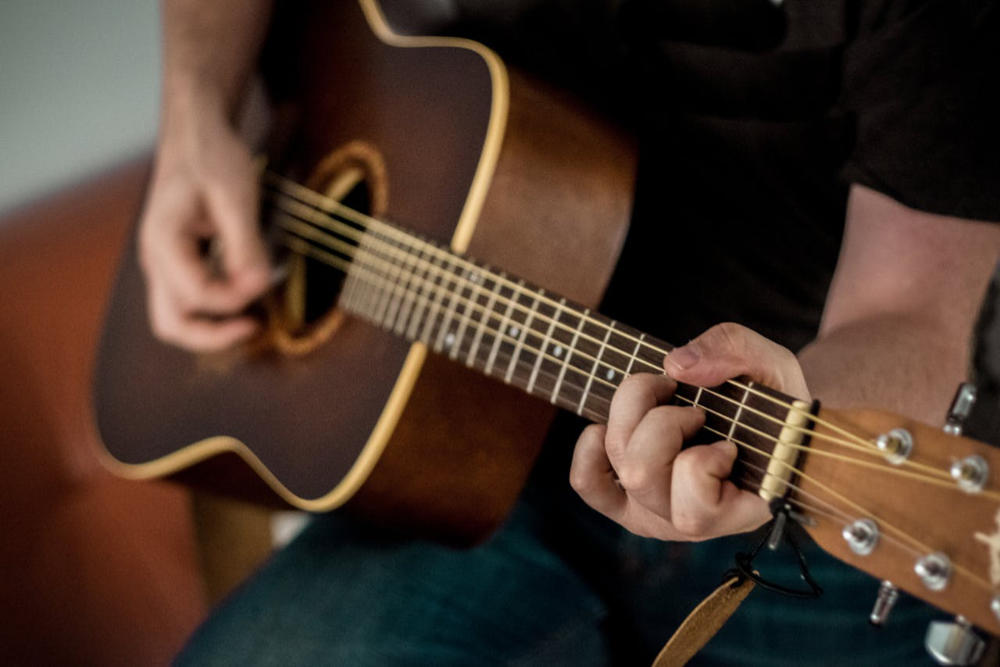Estimated reading time: 12 minutes
Music has a magical ability to move us, to make us feel emotions we never knew existed. And at the heart of many memorable songs lies a musical element known as a riff. But what exactly is a riff? In simple terms, a riff is a short, repeated musical phrase or series of notes that forms the backbone of a piece of music. It’s like the secret ingredient that gives a song its groove and hooks the listener right from the start.
Table of contents
- The definition and characteristics of a musical riff
- The role of riffs in popular music
- Examples of famous and memorable guitar riffs
- Understanding the structure and elements of a riff
- Exploring different types of riffs – melodic, rhythmic, and chord-based
- The importance of rhythm and timing in creating impactful riffs
- How to create your own unique and catchy riffs
- The influence of iconic guitarists on the development of riffs
- What is a Riff? Explained in a Video
- Riffs in different genres of music – from classical to rock and everything in between
- The difference between a riff and a musical phrase or chord progression
- Tips for incorporating riffs into your own musical compositions
- How to use the pentatonic scale to create memorable riffs
- The history and evolution of riffs in popular music
- Conclusion
- FAQ
The definition and characteristics of a musical riff
A musical riff is characterized by its catchy and repetitive nature. It’s that instantly recognizable musical idea that gets stuck in your head and refuses to leave. Riffs are often played on guitar, but they can be created on any instrument. They can be melodic, rhythmic, or chord-based, depending on the style and genre of music. What sets a riff apart from other musical phrases or chord progressions is its distinctiveness and ability to stand out in a song.
The role of riffs in popular music
Riffs play a crucial role in popular music. They serve as the foundation upon which a song is built, providing a memorable and recognizable motif that listeners can latch onto. Think of iconic guitar riffs like Chuck Berry’s “Johnny B. Goode” or Ritchie Blackmore’s “Smoke on the Water.” These riffs have become synonymous with the songs themselves and have left an indelible mark on the history of popular music. Riffs have the power to define a song, create a signature sound for a band, and even shape entire genres.
Examples of famous and memorable guitar riffs
Let’s take a moment to appreciate some of the most famous and memorable guitar riffs in music history. These riffs have stood the test of time and continue to inspire generations of musicians.
| Song Title | Artist |
|---|---|
| “Smoke on the Water” | Deep Purple |
| “Sunshine of Your Love” | Cream |
| “Sweet Child o’ Mine” | Guns N’ Roses |
| “Day Tripper” | The Beatles |
| “Enter Sandman” | Metallica |
Understanding the structure and elements of a riff
To better understand the anatomy of a riff, let’s break it down into its essential components. A typical riff consists of a catchy melodic or rhythmic pattern, often played on the guitar. It can be as short as a few notes or as long as a phrase. Riffs can also incorporate power chords, which are chords that consist of only two or three notes and are often used in rock and metal music to create a heavy and distorted sound. The timing and rhythm of a riff are crucial in creating its impact. A well-timed and groovy riff can make all the difference in a song.
Overview of the structure and elements of a riff
| Element | Description |
|---|---|
| Melodic Pattern | The catchy sequence of notes that forms the melody of the riff. This pattern is often repeated throughout the riff and serves as its main hook. |
| Rhythmic Pattern | The rhythmic arrangement of the notes within the riff. This pattern dictates the groove and feel of the riff and is crucial in creating its impact. |
| Instrumentation | The instrument(s) used to play the riff. While guitar is common, riffs can be created on any instrument, including bass, keyboards, or even vocals. |
| Length | The duration of the riff, which can vary from a few notes to a longer phrase. Shorter riffs are often more memorable and impactful. |
| Dynamics | The variation in volume and intensity within the riff. Dynamics can help to create tension and release, adding depth to the riff’s expression. |
| Chord Progression | In chord-based riffs, the sequence of chords played in a specific pattern. Chord progressions provide harmonic structure and support to the riff. |
| Syncopation | The placement of accents or emphasis on off-beats within the rhythm. Syncopation adds a sense of groove and rhythmic interest to the riff. |
| Variation | The introduction of subtle changes or developments within the riff to maintain interest and prevent monotony. Variations can include alterations in melody, rhythm, or dynamics. |
| Resolution | The conclusion or resolution of the riff, often leading back to the song’s main chord progression or serving as a transition to the next section. |
| Interaction | How the riff interacts with other elements of the music, such as vocals, drums, or other instrumental parts. A well-integrated riff enhances the overall texture and impact of the song. |
| Catchiness Factor | The degree to which the riff is memorable and easily recognizable. A catchy riff has a strong melodic or rhythmic hook that sticks in the listener’s mind. |
| Groove | The overall feel and flow of the riff, often characterized by its rhythmic drive and sense of movement. A riff with a solid groove is infectious and encourages listeners to move or dance. |
Exploring different types of riffs – melodic, rhythmic, and chord-based
Riffs come in various forms, each with its own unique flavor. Melodic riffs are characterized by their catchy and singable melodies. They often serve as the main hook of a song, instantly grabbing the listener’s attention. Rhythmic riffs, on the other hand, focus more on the rhythm and groove. These riffs are often repetitive and can be found in funk, disco, and dance music. Lastly, chord-based riffs revolve around a series of chords played in a specific pattern. These riffs are commonly found in rock, pop, and blues music and provide a harmonic foundation for the song.
The importance of rhythm and timing in creating impactful riffs
When it comes to creating impactful riffs, rhythm and timing are everything. The way a riff is played and its relationship to the underlying rhythm can completely change the feel and energy of a song. It’s the subtle nuances in timing and the intentional placement of notes that give a riff its groove and make it memorable. So, don’t be afraid to experiment with different rhythms and syncopation when crafting your own riffs. Remember, the rhythm is what gets people moving and grooving to your music.

How to create your own unique and catchy riffs
Creating your own unique and catchy riffs can be a thrilling and rewarding experience. Here are a few tips to help you get started:
- Experiment with different chord progressions and scales. The pentatonic scale is particularly useful for creating memorable riffs.
- Don’t be afraid to borrow ideas from your favorite songs and artists. Just be sure to put your own spin on them to make them your own.
- Keep it simple. Some of the most iconic riffs are incredibly simple but incredibly effective.
- Focus on the groove and the feel of the riff. A catchy rhythm can make even the simplest of melodies sound amazing.
- Practice, practice, practice. The more you play around with different ideas and techniques, the more likely you are to stumble upon something truly special.
The influence of iconic guitarists on the development of riffs
Throughout the history of music, there have been guitarists who have pushed the boundaries of what a riff can be. From blues legends like B.B. King and Muddy Waters to rock gods like Jimi Hendrix and Jimmy Page, these iconic guitarists have left an indelible mark on the development of riffs. Their innovative playing styles and creative approaches to the guitar have inspired countless musicians and shaped the way we think about riffs today. So, next time you pick up your guitar, take a moment to pay homage to these pioneers who paved the way for future generations.
What is a Riff? Explained in a Video
Riffs in different genres of music – from classical to rock and everything in between
Riffs are not limited to a single genre of music. They can be found in classical compositions, jazz improvisations, and even electronic dance music. While the characteristics of a riff may vary from genre to genre, its essence remains the same – a catchy and repetitive musical idea that grabs the listener’s attention. From the classical melodies of Mozart to the distorted power chords of heavy metal, riffs have become an integral part of music in all its forms.
The difference between a riff and a musical phrase or chord progression
It’s important to distinguish between a riff and other musical terms like a musical phrase or chord progression. While a riff is a repetitive and catchy musical idea that often serves as the backbone of a song, a musical phrase is a short musical idea that can be repeated or developed within a larger musical composition. A chord progression, on the other hand, is a sequence of chords that form the harmonic structure of a piece of music. While riffs can incorporate musical phrases and chord progressions, they are distinct in their repetitive nature and ability to stand out.
Overview of the difference between a riff and a musical phrase or chord progression
| Aspect | Riff | Musical Phrase | Chord Progression |
|---|---|---|---|
| Definition | A short, repeated musical motif or series of notes that forms the backbone of a song. | A concise musical idea consisting of a series of notes or chords that contributes to the overall composition. | A sequence of chords played in a specific pattern that establishes the harmonic framework of a song or section. |
| Repetition | Typically repetitive and often serves as a recurring element throughout the song. | May be repeated or varied within a musical composition but may not necessarily recur as frequently as a riff. | Typically played in a repeating pattern or progression throughout a song section or entire composition. |
| Catchiness | Known for its memorable and catchy nature, often instantly recognizable to listeners. | While it can be catchy, its primary purpose may not always be to create a hook or memorable motif. | While some progressions may be memorable, their primary function is to establish harmony rather than serve as a hook. |
| Instrumentation | Can be played on any instrument, but often associated with guitar or other melodic instruments. | Can be performed on any instrument or combination of instruments. | Played on instruments capable of producing chords, such as guitar, piano, or keyboards. |
| Role in Composition | Forms the backbone of the song, providing a recognizable and often defining element. | Contributes to the overall structure and development of a musical piece, supporting melody, harmony, or rhythm. | Establishes the harmonic framework of the song, providing stability and support for other musical elements. |
| Emphasis on Melody | Typically emphasizes a catchy and memorable melodic pattern or motif. | May focus on melody but can also include harmonic or rhythmic elements. | Primarily focuses on establishing harmonic relationships between chords, with less emphasis on a specific melodic motif. |
| Level of Variation | May undergo variations or developments throughout the song but often retains its core melodic or rhythmic characteristics. | Can vary in length and complexity, but its essential musical idea remains consistent within the composition. | Progressions may vary between sections of a song but often maintain consistency within a particular section or musical style. |
| Notable Examples | “Smoke on the Water” by Deep Purple, “Day Tripper” by The Beatles. | Various musical phrases found in classical compositions, jazz improvisations, and popular music. | Common chord progressions include the I-IV-V in blues and rock music or the ii-V-I in jazz. |
Tips for incorporating riffs into your own musical compositions
If you’re a budding songwriter or composer looking to incorporate riffs into your own musical compositions, here are a few tips to help you get started:
- Start with a catchy and memorable riff as the foundation of your song.
- Use variations and developments of the riff throughout the composition to create interest and keep the listener engaged.
- Experiment with different instruments and textures to add depth and complexity to your riffs.
- Don’t be afraid to break the rules and think outside the box. Some of the most innovative and memorable riffs have come from musicians who dared to be different.
- Seek inspiration from a wide range of musical genres and styles. The more diverse your influences, the more unique your riffs are likely to be.

How to use the pentatonic scale to create memorable riffs
The pentatonic scale is a powerful tool for creating memorable and catchy riffs. This scale consists of five notes and is widely used in various musical genres, from blues and rock to pop and jazz. Its simplicity and versatility make it an excellent choice for beginners and seasoned musicians alike. To create a riff using the pentatonic scale, start by familiarizing yourself with the scale’s pattern and then experiment with different combinations of notes. The pentatonic scale provides a solid foundation for improvisation and can unlock a world of musical possibilities.
The history and evolution of riffs in popular music
Riffs have been an integral part of popular music for decades, shaping the sound of various genres and leaving a lasting impact on listeners. The history of riffs can be traced back to the early blues and jazz musicians who used repetitive melodic patterns to create a sense of groove and swing. As popular music evolved, so did the role of riffs. From the soulful Motown riffs of the 1960s to the heavy metal riffs of the 1980s, riffs have continued to evolve and adapt to the changing musical landscape. Today, they remain as relevant and influential as ever, continuing to inspire and captivate audiences around the world.
Conclusion
In conclusion, a riff is more than just a series of notes or a musical phrase; it’s the heartbeat of a song. It’s that infectious melody or rhythm that gets your foot tapping and your head nodding. Whether you’re a guitarist, a songwriter, or simply a music lover, understanding what a riff is and how it works can deepen your appreciation for the art of music. So, the next time you find yourself humming along to a catchy tune, take a moment to appreciate the genius behind the riff that made it all possible.
Related Posts
- What is a Vocal Run? Unleashing the Magic
- What Does a Recording Engineer Do? Behind the Soundboard
- How to Start Making Music? A Beginner’s Guide
- What is Audio Normalization? Breaking Down the Basics
- What Is Gain in Audio? Understanding Gain in Simple Terms
- What is Treble in Music? Breaking it Down
FAQ
While a riff is a repetitive and catchy musical idea, a musical phrase is a short musical idea that can be repeated or developed within a larger musical composition.
Absolutely! Riffs can be created on any instrument. While guitar riffs are most commonly associated with popular music, riffs can be found in various genres and on a wide range of instruments.
To make your own riffs stand out and be memorable, focus on creating a catchy and distinctive melody or rhythm. Experiment with different chord progressions and scales, and don’t be afraid to think outside the box.
Yes, riffs can be incorporated into classical music compositions. While classical music tends to be more complex and structured, the use of repetitive and catchy musical ideas can add a contemporary twist to traditional compositions.
No, riffs are not limited to popular music. They can be found in various genres, including classical, jazz, and even electronic music. Riffs are a universal musical element that transcends genres and styles.
